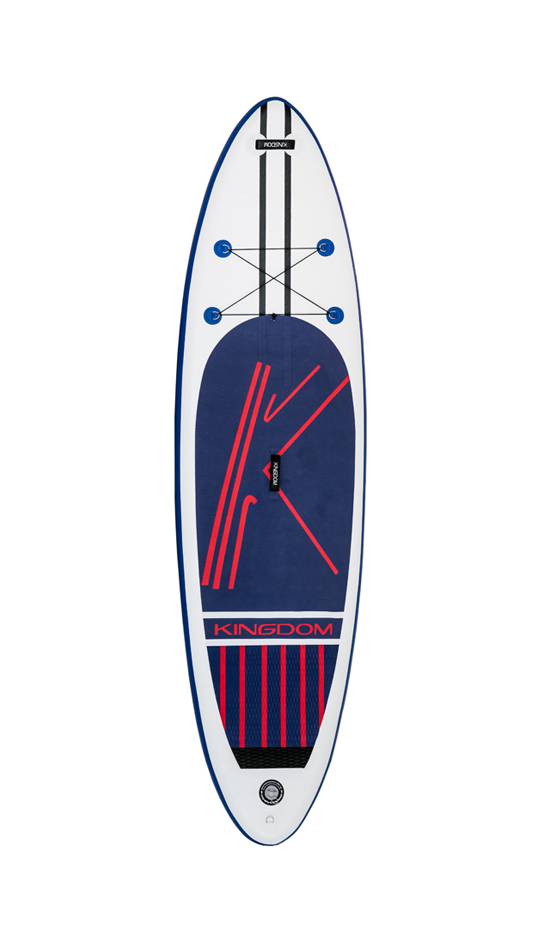Stand-up paddleboarding
Publish Time:
2025-06-12 16:38
Source:
Stand-up paddleboarding, abbreviated as SUP, is also known as stand-up paddling. SUP stands for stand-up paddleboard. This sport originated in the early 1960s from traditional Hawaiian surfing, when a group of Hawaiian surfers known as the Waikiki Beach Boys, "Beach Boys Surfing" is another name for stand-up paddleboarding, as they would take photos of tourists learning to surf while standing on elongated surfboards.

Later, to manage the number of students, surf instructors realized that one surfboard instructor could easily control the scene and observe the waves. Stand-up surfing is now very popular in warm seaside resorts around the world, and due to its popularity among professional surfers, celebrities, and stars, it can be seen in safe waters around the world. One advantage of stand-up paddleboarding is that it doesn't require the ocean and waves. You can also paddle in the calm waters of local rivers and lakes. There are many ways to play stand-up paddling, including the following.
1. Surfing: Stand-up paddleboard surfing is basically an elongated surfboard. Surfers using paddles can not only surf better and faster, but also reach the waves earlier.
2. Touring: Although stand-up paddling began with surfing, it is now widely regarded as a paddling sport. Stand-up paddleboard touring is suitable for those who want long-distance travel, and can be done on lakes, rivers, and bends.
3. Cruising: Stand-up paddleboard cruising is very easy for most people who just want to have fun. Stand-up paddling can be done in any safe waters, including rivers, lakes, wetlands, and reservoirs.
4. Racing: For stand-up paddleboard racing, you need a longboard specifically designed for speed. The bottom of the board usually has a large fin, which is very helpful for water separation and tracking. Paddling is a race of strength and high balance.
5. Whitewater: Whitewater stand-up paddleboarding is a technically demanding and dangerous sport that requires some training to learn. When you are able to paddle in whitewater, you need to wear a helmet.
6. Fitness: Stand-up paddling is also beneficial for fitness. It can exercise muscles you don't even know about, such as toe muscles, and long-term paddling can improve your balance. If you want to be quieter, you can practice stand-up paddleboard yoga.
7. Fishing: Paddleboards can also be used for fishing. Sit or stand on the paddleboard so you can see deeper and wider waters. Of course, in order to maintain stability, the paddleboard used for fishing must add the necessary accessories.
Other News
The Ultimate Guide to Lightweight Inflatable Kayak Boats: Freedom on Water
Lightweight inflatable kayak boats have gained immense popularity among water sports enthusiasts and casual adventurers alike. Their innovative design combines the comfort of traditional kayaks with the convenience of portability, making them ideal for a variety of water activities, from serene lake paddling to challenging river excursions. This guide will delve into the numerous advantages that t
Get Ready for Waves: Inflatable Surfboards for Teen Enthusiasts
Get Ready for Waves: Inflatable Surfboards for Teen Enthusiasts Table of Contents Understanding Inflatable Surfboards Why Choose Inflatable Surfboards for Teens? Key Features to Look for in Inflatable Surfboards Top Inflatable Surfboards for Teen Enthusiasts Safety Tips for Surfing with Inflatable Boards Caring for Your Inflatable Surfboard Surfing Techniques for Begin
Choosing a Durable PVC Kayak for Beginners: Essential Insights
When starting your journey into kayaking, selecting the right watercraft can significantly enhance your experience. A durable PVC kayak stands out as an excellent choice for beginners, offering both resilience and ease of use. PVC, or polyvinyl chloride, is a popular material in the production of inflatable kayaks due to its strength and flexibility. Here are several reasons why a durable PVC kaya
Inflatable Surfboards for Adults: The Ultimate Guide to Enjoying Water Sports
Inflatable Surfboards for Adults: The Ultimate Guide to Enjoying Water Sports Table of Contents 1. Introduction to Inflatable Surfboards 2. Benefits of Using Inflatable Surfboards 3. How to Choose the Right Inflatable Surfboard 4. Key Features of Inflatable Surfboards 5. How to Properly Inflate and Deflate Your Surfboard 6. Essential Safety Tips for Surfing 7. Maintena
The Advantages of Soft Top Inflatable Surfboards: A Guide for Water Sports Enthusiasts
Soft top inflatable surfboards have rapidly gained popularity among water sports enthusiasts, offering a unique combination of convenience, safety, and performance. Whether you're a beginner looking to catch your first wave or an experienced surfer seeking a portable solution, understanding the advantages of soft top inflatable surfboards can help you make informed decisions. ### Portability and C
The Ultimate Guide to Choosing the Best Lightweight Inflatable Kayak Boat
The Ultimate Guide to Choosing the Best Lightweight Inflatable Kayak Boat Table of Contents 1. Understanding Lightweight Inflatable Kayaks 2. Why Choose a Lightweight Inflatable Kayak? 3. Key Features to Consider When Buying 3.1 Material Quality 3.2 Weight Capacity 3.3 Stability and Performance 3.4 Comfort Features 3.5 Portability and Storage 4. Top Lightweight Inflatable Kayaks on the Market 4.1


